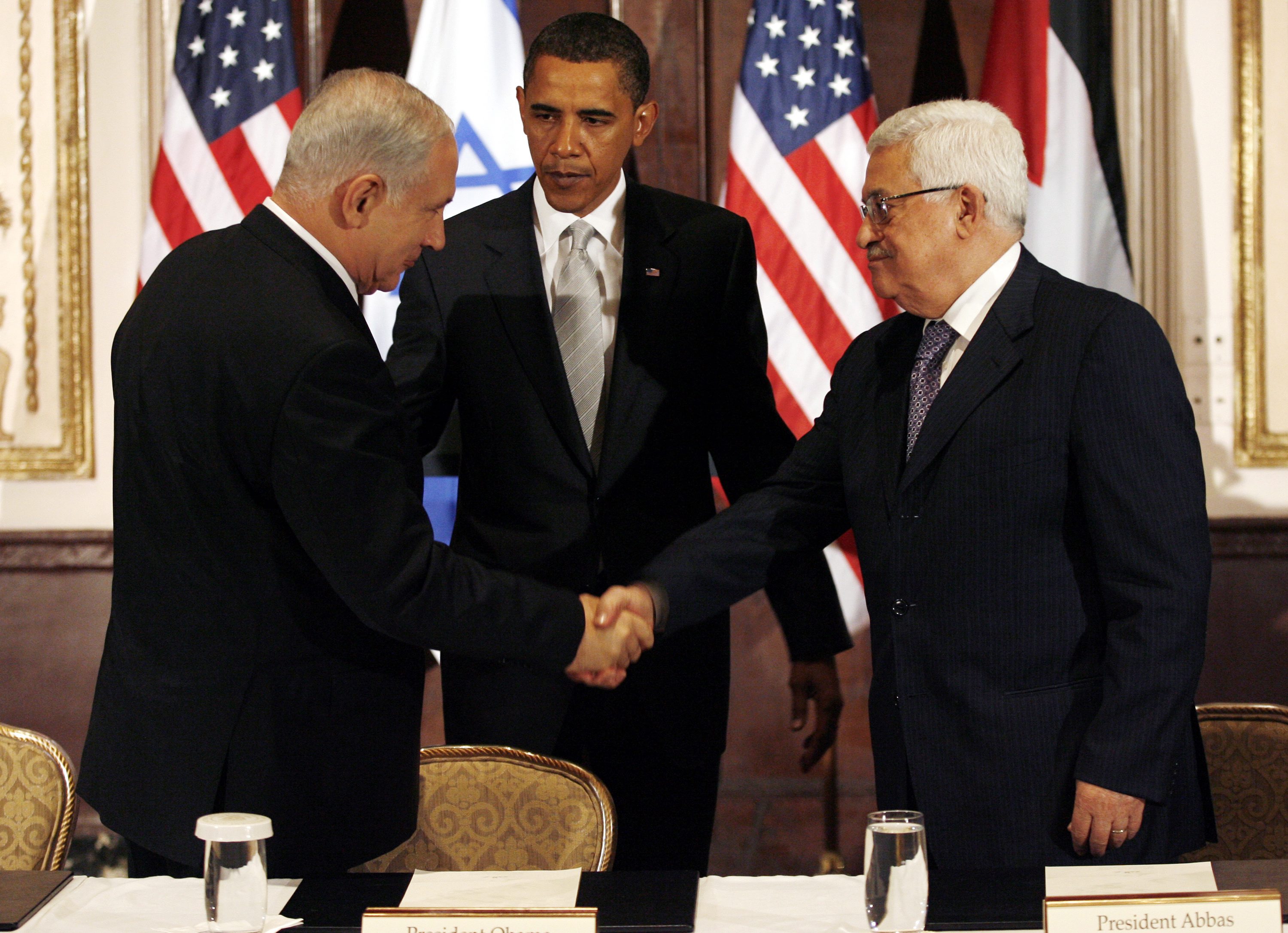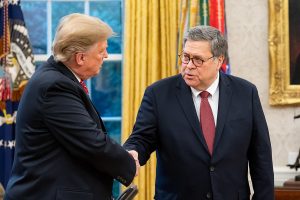by Mitchell Plitnick
As the curtain drops on 2017, it drops too on the Israeli-Palestinian peace process as we have known it. At the age of 24, that process has finally died, with none other than President Donald Trump pulling the plug. But let’s not give him too much credit or blame for that. The killing blow was struck by his predecessor, Barack Obama.
There was much to like in Obama’s presidency, especially given the mess he was handed in 2009 and the unprecedented obstructionism of the Republican Party during his tenure. But he also had abject failures that were due to his own shortcomings, and the sharp degeneration in the Israeli-Palestinian conflict under his watch is at the top of the list.
The structure of the Oslo peace process probably doomed it to failure from the beginning. It was always meant to focus on bilateral talks, with the tough issues put off as long as possible. Meanwhile, nothing in the accords on which the process was based prohibited the expansion of Israeli settlements in the territories it occupied in 1967; human rights in general was barely an afterthought; and the dependence in the Accords on the political will of Israelis, the far more powerful party, opened the door for both demagogic Israeli leaders and violent Palestinian groups to erode that will very quickly.
The Rise and Fall of the Oslo Process
The hope that existed in the Oslo Accords, such as it was, arose entirely out of the will of Palestinian and Israeli negotiators. Unfortunately, those negotiators failed to address the political reality that the United States, a hopelessly biased party, had long since established itself as the broker of negotiations. In fairness, the U.S. record in 1993, while far from exemplary, was not nearly as bad as it would become. The Camp David agreement of 1979 fell far short of what President Jimmy Carter had wanted for the Palestinians, but it did reduce the threat of Middle East warfare by brokering Israeli-Egyptian peace. And George H.W. Bush had granted some legitimacy to the Palestinians as a people with rights by including them, even if not equally, at the Madrid conference in 1991. These may seem small achievements, and they are, but they are more than any subsequent US president managed to accomplish.
By the time Barack Obama came into office, more than 15 years into the Oslo process, the situation had deteriorated very badly. Then-Israeli Prime Minister Yitzhak Rabin’s 1995 assassination at the hands of a right-wing extremist—who was encouraged, consciously or otherwise, by a slew of right wing rabbis and by Rabin’s main political opponent, Benjamin Netanyahu—was followed by a wave of terrorism that threw ice water on Israeli enthusiasm for peace and swept Netanyahu into office. The contentious relationship between Netanyahu and Bill Clinton resulted in the Hebron Agreement and eventually helped to push Netanyahu out of office, but it also slowed progress with the Palestinians to a near stop, and Oslo’s five-year deadline for final status issues passed with no progress on them at all. Clinton’s response to this, the Camp David II summit, was a disaster, as Clinton and Netanyahu’s successor, Ehud Barak, broke their promise not to blame Arafat for its failure. The second intifada ensued, and the Israeli liberal-left was destroyed while the West Bank and Gaza were decimated.
George W. Bush’s war on terror filled the void in the U.S.-Israel alliance that had been there since the end of the Cold War. His “Roadmap to Peace” might have been a useful document if there had been any enforcement mechanism in it, but there was not. The Roadmap and the Annapolis Summit were empty gestures against a regional policy, largely designed by neoconservatives, that destroyed not only the previous policy of “dual containment” of Iraq and Iran, but effectively destroyed Iraq, planting the seeds that sprouted into the Islamic State (ISIS or IS) and regional chaos.
As Bush changed the regional context, fruitless talks between Israel and the Palestinians continued. Ariel Sharon’s plan to withdraw all Israeli forces and settlements from the Gaza Strip, and to remove four small settlements from the West Bank, demonstrated, as intended, how politically difficult evacuating settlements was for Israeli leaders—pouring, as Sharon’s aide Dov Weisglass put it, formaldehyde into the peace process.
Hamas’ electoral victory in 2006 made the Israeli public much more apprehensive, even as the intifada was winding down. The refusal of the U.S. and Israel to accept the results of an election they pushed the Palestinian Authority into holding culminated in a coup attempt by Fatah forces in Gaza. The attempt failed. Israel subsequently designated Gaza a hostile territory, and placed a full closure around the already horribly poor, mostly isolated, and overcrowded Strip that continues to this day. At the end of Bush’s second term, Israel launched the first of a series of large-scale military operations against Gaza.
That was the boiling cauldron into which Barack Obama stepped. Obama had openly expressed not only staunch support for Israel’s security but a deep and, for a U.S. president, unique sympathy for the plight of the Palestinians. Obama’s speech at the beginning of his term, made in Cairo on his first foreign tour, offered hope that his administration would be different.
Enter Obama
At first, it seemed the lofty words might even herald some substantial policy shift. Soon after taking office, Obama called for a total freeze on Israeli settlement construction. But Obama had failed to lay the groundwork in Washington for such a call, and when Israel as well as congressional Republicans attacked him for it, Democrats offered half-hearted support or stayed entirely out of the line of fire. Finally, desperate to salvage something, Obama accepted the partial freeze that Netanyahu offered, which essentially amounted to no freeze at all.
The episode laid bare the reality of Obama’s Middle East policy. He had good intentions, but could not overcome the inherent U.S. bias that many peace advocates had been pointing out for years.
Obama had two years with a Democratic Congress, and his failure with the settlement freeze meant he was faced with a choice. He was already thinking about a broader Middle East policy shift, considerations which eventually turned into new sanctions on Iran designed to force the Islamic Republic to the table on the issue of its alleged pursuit of nuclear weapons. Concluding a deal with Iran would, and did, require enormous political capital. There was no way he could even consider substantive pressure on Israel and the Palestinians to push for a final status agreement and pursue the Iran nuclear deal. He wisely chose the latter.
But Obama made another fatal error, this one in 2011, when he vetoed a United Nations Security Council resolution that had been intentionally drafted to reflect official United States policy on Israeli settlements. The resolution imposed nothing on the parties other than calling on Israel to stop settlement expansion, as Obama himself had called for, and negotiate the final status issues. By vetoing this resolution, Obama made it clear that there would be no pressure on Israel from him beyond rhetoric.
Few were ready to say so then, but it was on that day, nearly seven years ago, that the Oslo process died. Obama would, of course, continue to allow John Kerry to try his hand at making peace, but Obama’s own involvement was much more subdued and without a strong push from the president, there wasn’t even hope for a miracle.
Ironically, UNSC 2334, from which the US abstained in December 2016, was quite similar to the one Obama had vetoed. While the resolution gave Obama a small feather in his cap on his departure, and offered a strand of hope to those working for a diplomatic solution to the ongoing denial of rights to the Palestinian people, it was far too little and far too late.
Donald Trump, with his refusal to call for a two-state solution, his stacking his Mideast team with supporters of Israeli settlers and far right elements, his close relationship to Benjamin Netanyahu and, finally, his reckless recognition of Jerusalem as Israel’s capital, really did nothing more than proclaim the death that Obama had done much more to bring about. Their intentions couldn’t have been more different, but the result was the same.
Where to now?
At this point, the real question is how long it will take the world to acknowledge that the old game is over. The two-state solution need not be abandoned, but it must be reconsidered and reformulated. All options now must be considered, and it remains to be seen what outcome the Palestinians themselves will seek.
We know what Israel wants: continued control over the West Bank with very limited autonomy for the Palestinians in non-contiguous territory that, if they wish, they can call a state. Obviously, that is not what the Palestinians want. If it is true, as current rumor has it, that the United States and Saudi Arabia are working on a plan to force Palestinian President Mahmoud Abbas to accept such a deal, that effort is unlikely to succeed—especially now that Trump has turned up the tension with his Jerusalem declaration.
But as grim as things are, there is also a real opportunity here. The U.S.-led process is dead. The focus now must be on a new process. Whether that process has the same or a different goal, it cannot be led by the United States. If the last quarter century proves anything, that’s it.
An international coalition, along the lines of the P5+1 that negotiated the Iran deal, albeit with less U.S. leadership this time around, would have a much better chance to insulate itself against reactionary domestic pressures—in the U.S. and the European Union as well—that work to ensure the full denial of Palestinian rights.
This is a greater possibility than ever because Trump has already diminished U.S. influence significantly around the world, and the bullying style on display again at the UN in recent weeks will only accelerate that process. The European Union, even without the United Kingdom, is still Israel’s largest trading partner by far. If they can work with China and Russia on formulating a peace plan that has some teeth in it, Israel cannot ignore that. The U.S. can be involved, as an equal, and in that case, its role as Israel’s “lawyer” can be a positive, providing a voice for Israel without the ability to block the global consensus.
It can be tough for many to face, but the U.S. role as broker has been perhaps the biggest reason for the failure of the peace process. That’s not to absolve Israel or the Palestinians, both of whom have contributed plenty to that failure. But for the US, Israel is a key ally, while the Palestinians are, at best, a charity case. Israel has strong political pull in Washington, the Palestinians have none. The US cannot be anything but a destructive player in a negotiation where a great power is needed to mediate and bridge the gap between a regional superpower and a stateless people.
Now there is an opportunity for the international community to change this framework. As things stand now, they will not do it. The Boycott, Divestment, Sanctions movement (BDS) has not succeeded in shifting the ground in Europe, let alone in the United States, toward serious action to press both sides into a workable and lasting agreement.
But a grassroots push is exactly the right idea. Now is the time for everyone who cares about Israel, the Palestinians, the Middle East, and global peace to organize, lobby, demonstrate, petition, and advocate in every way they can for an international coalition with limited U.S. involvement. It can work, the window of opportunity has never been wider.






Let’s see: prosecuting more whistleblowers under the espionage act than all the previous presidents combined, turning 2 wars into seven, starting a proxy war with nuclear armed Russia in Ukraine of all places, making GWB’s tax cuts permanent, taking a brief filibuster proof majority and using it to shove a right wing Heritage Foundation “Health Care” plan down our throats, throwing people out of their homes just so the “too big too fail” banks could get even bigger. What’s not to like?
Obama in effect was forced to encourage Israel to continue flouting international law by expanding illegal settlements in the occupied West Bank. I think we know who did the forcing.
The two-state “solution” is long dead. Neither side wants it and neither side will agree to it. It’s merely a fig-leaf so the powers can say they are doing something.
The next war will allow the Zionists to truck the West Bank Palestinians to Jordan.
To blame Obama for the failure of a peace agreement is just plain silly. If there were a small chance of talks taking place, Trump ended that with his announcement about moving the American embassy to Jerusalem…Abbas shortly after proclaimed that America could no longer be a peacemaker; they had taken sides
The whole debate seems kind of silly to me. How can you really think that “negotiations” are taking place when one side still considers the existence of the other side to be up for negotiation? Another way to look at the 2006 results in Gaza is that the Palestinians in Gaza elected the “death to Israel” party running on the “death to Israel” platform – since “death to Israel” was literally written in the charter of Hamas at the time. That is a clear indication that destroying Israel was a higher priority in Gaza than gaining statehood. That is not a setting for negotiation – clearly the peace process was dead in 2006, if it had ever really been alive to begin with.
OR mentions “…countless others in history who have been marginalized out of it by invincible conquest…” including native Americans, but doesn’t get to the Christians and Jews who were marginalized by conquest in Palestine, the Middle East and North Africa. I’m not interested in rehashing history, but we need to consider the current reality and context to be able to consider paths forward. Displaced Palestinians feel they have some right to the homes they left or were evicted from – which is reasonable, but across the Islamic world millions displaced because they are Jewish or Christian, and that is assumed to be the normal way of life. That is part of the situation.